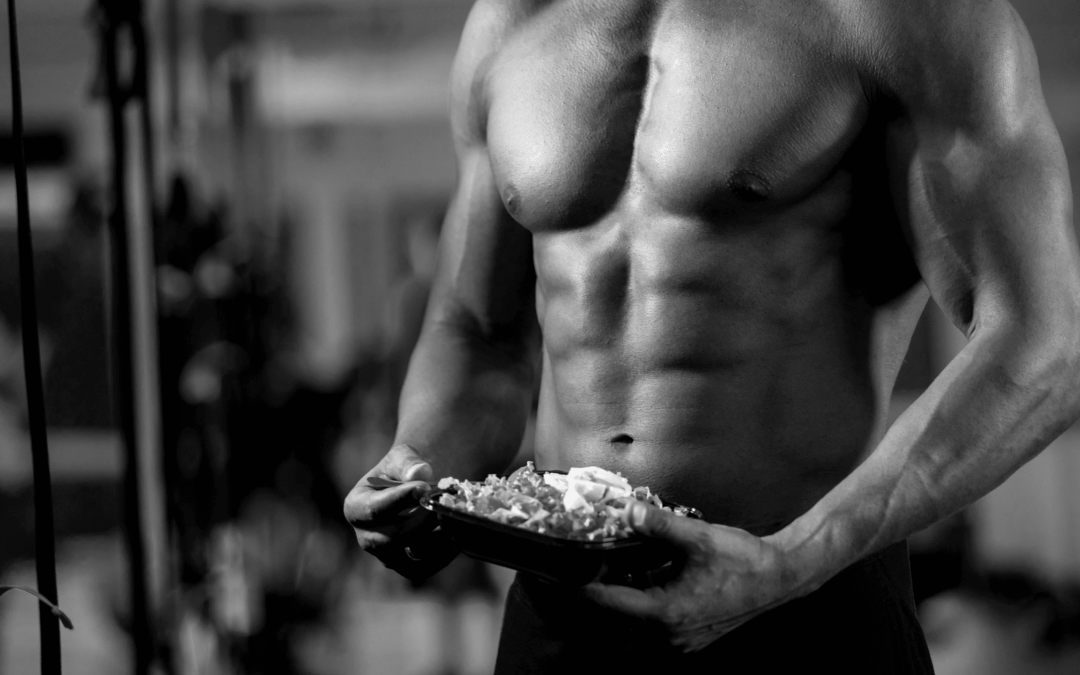The principle of muscle growth in its simplest form can be summarized in two steps. Muscle fibers sustain damage through resistance training and grow during the reparation process. Along with proper nutrition and adherence this will lead to strength and muscle gains overtime.
Muscle growth generally occurs when resting, therefore it would make sense to maximize the reparation process as much as possible.
One fundamental method to help muscles repair is through adequate protein consumption. With this in mind, is there a ‘best time’ when consuming protein is more effective for muscle growth than any other time following resistance training?
What is the anabolic window?
As many of us already know muscle growth is mainly stimulated at the gym but optimal growth heavily relies on your post-workout nutrition.
The term “anabolic window” refers to a short period of time following resistance training where protein and carbohydrate consumption is said to be most effective. Several people claim the anabolic window only lasts 30 minutes following your workout, meaning if you consume protein or carbohydrates anytime after that it will benefit you to a much lesser degree.
But does this mean you have to consume a protein shake as soon as you rerack your weights?
The goal of anabolic window
There are two objectives of the proposed 30-minute anabolic window.
The first goal of the anabolic window is to take advantage of nutritional timing to maximize muscle growth. This is often achieved by consuming enough protein after a workout to increase muscle protein synthesis.
Muscle mass is added when the net protein balance is positive, that is to say when muscle protein synthesis (MPS) exceeds muscle protein breakdown (MPB). Research shows anywhere from 20-25g of high quality protein is enough to stimulate MPS. [1]
The second goal of the anabolic window is to restore the glycogen storage levels. With glycogen levels depleting approximately 24-40% following the average resistance training its good to consume some form of carbohydrates to replenish your stores for the following day. [2][3]
Unlike consuming protein which increases amino acid availability and MPS, decreasing MPB can also be achieved through spikes in insulin levels. Insulin demonstrates anti-catabolic effects resulting in reduced proteolysis (protein breakdown). Therefore, consuming carbohydrates to induce an insulin spike and protein to increase amino acid availability would be the most logical post-workout meal choice.
Do I need to eat protein right away following a workout?
The commonly held belief of timing protein intake 30 minutes immediately after a workout to result in greater muscular adaptations simply isn’t true.

Resistance exercise stimulates a prolonged elevation of MPS that can remain elevated for at least 48 h (dotted line). Protein ingestion at any point during this enhanced period of ‘anabolic potential’ will have an additive effect to these already elevated exercise mediated rates (solid lines). Reproduced from Churchward-Venné et al. with permission. MPS muscle protein synthesis.[4]
As seen in the figure above from Dr. Stuart M. Phillip’s 2014 paper, the initial MPS spike appears to reside within the 2-3 hour range following resistance training and is in fact not only elevated for 30 minutes, but rather 48 hours. This is a huge difference between the actual muscle protein elevated period and the previously proposed time frame of 30 minutes.
This prolonged elevation of muscle protein synthesis allows for most protein ingested during this time period to have an additive anabolic effect.
Suppose you consume a protein-rich pre-workout meal 30-60 minutes before your workout, a practice most elite bodybuilders do, it is likely that those amino acids are still circulating your blood stream making the 30-minute anabolic window post-workout meal appear less urgent.
So is the anabolic window real?
It’s safe to say the proposed 30-minute narrow anabolic window is not entirely true. Currently there is no published literature that suggests the anabolic window only lasts for 30 minutes. With this in mind its not entirely clear where that time frame suggestion originated from.
Anabolic window for fasted training?
Despite most of the scientific literature moving away from the 30 minute anabolic window, there is something to be said about fasted training.
Training in a fasted state, say in the morning or right after work, may see a slight increase in benefit for post-workout nutrition.
One study from Dr. Brad Schoenfeld and Dr. Alan Aragon found that exercise in a fasted state leads to elevated muscle protein breakdown for 195 minutes post-workout resulting in a net negative protein balance. Despite the increase in protein synthesis following resistance training, exercise in a fasted state combined with the natural muscle protein breakdown caused by resistance training led individuals in a net negative protein balance. [5]
In order to maximize hypertrophy and strength gains its important to consume protein and carbohydrates especially if you’re in a fasted state. Of course this doesn’t mean you have to consume them within 30 minutes, but it would be best for you to consume theses two nutrients within an hour compared to 3 hours after a workout.
Consuming at least 20-25g of high quality protein can promote muscle protein synthesis while reducing proteolysis that causes muscle protein breakdown. This will shift you from a net catabolic state to a positive anabolic state. Overtime this will result in increased muscle mass.
PHF on the subject
Research across the board currently favors the idea that total protein intake throughout the day is more important than the timing, making the proposal of an anabolic window appear less credible.
Unless you currently workout in a fasted state post-workout nutrition containing protein and carbohydrates will benefit you more than someone who has had a pre-workout meal 30-60 minutes with these two nutrients. In any case, the real moral of the story is to be mindful of your total protein intake and don’t be too concerned over the suggested anabolic window.

